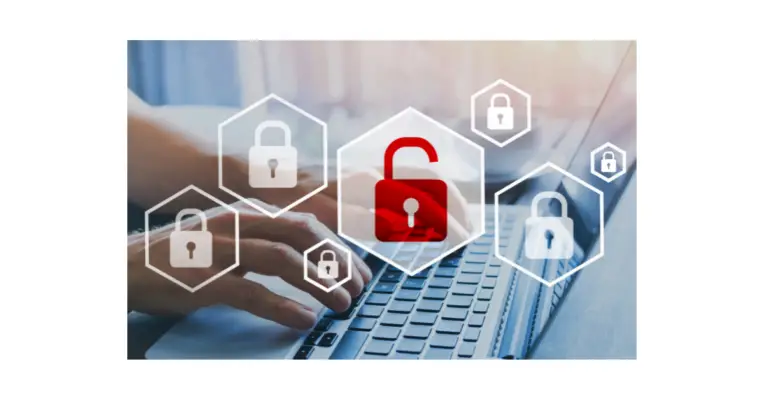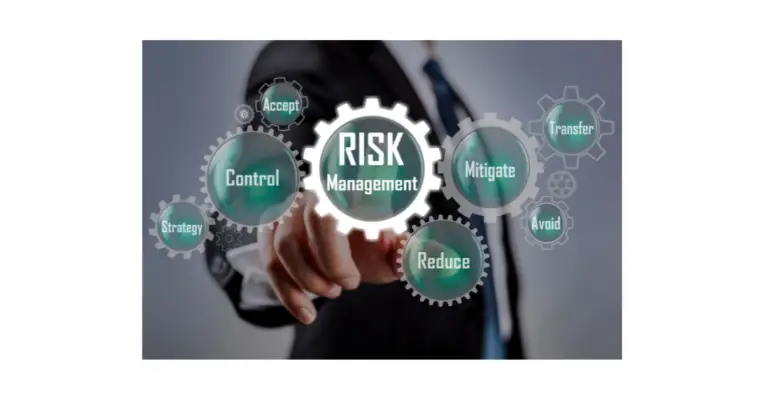Cybersecurity risks are ever-changing and dynamic. Organizations must continuously monitor and adapt their risk management practices to stay ahead of the curve. Organizations can protect themselves from costly cyberattacks with a proactive approach to risk management. In today’s digital age, cybersecurity is more important than ever.
Cyber attacks can result in the loss of data, money, and even lives. Risk management is the process of identifying, assessing, and mitigating risks. It is an essential part of cybersecurity. Identifying risks helps organizations prioritize their resources and mitigate the most severe risks. Assessing risks helps organizations understand an attack’s potential impact and plan for response and recovery. Mitigating risks helps to reduce the likelihood and impact of an attack.
Managing these risks through effective Risk Management strategies is critical to mitigating potential damage. When done correctly, Risk Management can protect businesses from the devastation of a successful cyber-attack. As the threat landscape evolves, businesses must stay up-to-date on the latest risks and vulnerabilities.
Every year brings security risks, data breach vectors, and previously unreported vulnerabilities. Even when zero-day vulnerabilities like EmulatorBlue exist, there’s an overall approach to cyber threats. There is an integrated security risk management framework based on a systematic risk assessment strategy.
Managing cyber security risks focuses on real-world risk management. The ISO defines risk as an outcome of uncertainty on goals. Risk management is a process that helps assess risks and respond to them.
In today’s cyber risk landscape, one unpleasant reality is clear. The importance of maintaining a security architecture may appear daunting to some of today’s more experienced teams. Many IT experts like Dave Hatter, an Intrust IT cybersecurity expert with more than 30 years of experience, say the risks in the cyber world are increasing.
A new study published by the APHA reveals increasing threats of cyber-related infections and cyber attacks to health. The number and intensity of cyber attacks on American healthcare facilities increased during the early stages. Even with a disproportionate increase in the number of IoT device deployments, the risk posed amounted to disproportionately large proportions – a reversible complication for a broader population.
Cyber attacks significantly impact patients by affecting their health and safety. Ransomware hacking and data loss are the most known cases of cyber damage and have many other consequences too. Hackers can now remotely restore life-saving technology to the victim’s device after they are attacked. The law forced some ambulance services to close or move by blocking electronic data transmission.
As security threats become more critical, there is an urgency to improve cyber-risk control strategies. Cyberattacks have more impacts on patients and infrastructure as compared to data and systems.
Many companies have developed risk management strategies to protect their data and systems in response to the increased frequency and severity of cyber threats. Cyber risk management is identifying, assessing, and mitigating risks posed by cybersecurity threats.
A comprehensive cyber risk management strategy typically includes four key components: vendor risk management, cyber risk insurance, incident response planning, and employee training.
Did you know that, according to the Ponemon Institute, the average cost of a data breach is $3.86 million? That’s much money for any business to lose. You might be wondering why cyber security is so important. After all, your business has never been hacked before, so why should you worry now?
The fact is that no business is immune to attacks, and it’s best to be prepared for when (not if) an attack happens. Risk management is one of the most critical aspects of cybersecurity, which every business should take seriously. In this blog post, we’ll discuss some of the basics of risk management and why it’s so important in cybersecurity. Stay safe!
What is Cyber Security Risk Management?
Cybersecurity risk management is identifying, assessing, and managing risks to information systems. It includes proactive and reactive measures to protect data and systems from attack. Proactive measures include developing strong security policies and procedures, educating and training employees on security best practices, and conducting regular security audits.
Reactive measures include incident response and contingency plans for data loss or system downtime. Cybersecurity risk management is a continuous process that should be revisited regularly to ensure that risks are adequately identified and managed.
Businesses today face various cyber threats that could jeopardize operations and compromise sensitive data. Many organizations are turning to vendor risk management (VRM) programs to mitigate this risk.
VRM programs help assess and monitor vendors’ cybersecurity practices, ensuring they meet the organization’s standards. By identifying and addressing potential vulnerabilities, VRM programs can play a vital role in mitigating cyber risk in business operations.
In addition to protecting business operations, VRM programs can help protect customer data and other sensitive information. By working with vendors to implement strong security measures, businesses can help to ensure that their data is safe from cyber threats.

Why Cybersecurity Risk Management is Important?
Cybersecurity risk management is important because it helps organizations manage and protect their data. Data is the lifeblood of businesses, and it needs to be protected from cyber threats. Cybersecurity risk management helps organizations identify and assess risks and develop and implement controls to mitigate those risks.
In managing cybersecurity risks, organizations can improve their data security posture and reduce the likelihood of a data breach. In today’s digital world, cybersecurity risk management is an essential part of protecting businesses and ensuring the safety of their data.
Every enterprise has to develop a cybersecurity strategy. Risk Management strategy involves cybersecurity strategy. When thinking about cybersecurity, your business needs an integrated strategy to manage risks that could harm you in some manner. Cybercrime has an exciting history because cyber attacks are often not always financial or logical based on money.

Standards and frameworks that require a cyber risk management approach
Aside from NIST SP 800-53, another security compliance specification or framework contains best practices for reducing cyber risk. The international standard on information management. The ISO 27001 – Security Framework (CSF) contains 108 suggested security activities
The National Institute of Standards and Technology’s (NIST) Cybersecurity Framework is a set of voluntary standards and guidelines that businesses can use to improve their cybersecurity posture.
The framework consists of five core functions – Identify, Protect, Detect, Respond, and Recover – and provides guidance on how to implement these functions to meet the organization’s unique needs. The framework is flexible and scalable and can be tailored to the organization’s specific risks.
Cybersecurity Risk Management Framework
Cyber security risk frameworks are standard methods to manage risks and vulnerabilities. This document provides guidelines guiding companies in managing cyber security risks. Often, these standardized frameworks meet company cybersecurity objectives, so choosing the right one will be appropriate for their systems.
Cybersecurity frameworks enable companies to conduct risk assessments to identify potential vulnerabilities. Companies can then remedy these gaps to mitigate potential risks and mitigate the risk of cyber attacks.
How to use cyber security risk management frameworks?
Cyber security risks have an important impact on all organizations that should be taken seriously. Instead, you must incorporate it into the risk mitigation program of the business.
The cybersecurity risk management framework is geared towards helping your organization assess risks systematically based on best practices. Suppose your company was able to implement a framework like this successfully. In that case, it shows that they are serious about protecting your information.
Cybersecurity Risk Management Process
Companies usually follow four steps of managing risk, which begin with detection. In subsequent stages, the risk is evaluated on the likelihood that a threat may exploit a vulnerability and the impact.
Organizations select various mitigation plans to minimize and prioritize risks in this process. Monitoring has four steps aimed at reducing risk in response to changing environmental conditions and limiting incoming events. The good news is that organizations can quickly assess risks.
Identify Cybersecurity Risks
Using this definition, Gartner identifies “a possible unplanned and unproductive business effect of the failure or misuse of the information system. What is the probability of an existing vulnerability being exploited? Risk detection and prevention are a vital part of management.
Modern security teams must deal with the growth of a slew of technologies to avoid the risk. To identify risk, you need first to understand the threat and vulnerabilities.
Assess cyber security risks
Risk Assessments are great opportunities to demonstrate how vital security is across your organization. A risk assessment will help you develop communication techniques to prepare the team for risk management.
The process of assessment of the risks associated with cyber security is comparable to that of other business threats that a company could face. Risk assessments are based on two main aspects: risk identification and risk evaluation.
How can we measure and assess risk in organizations? Assessment is critical to a clear answer to a given question. Start with defining each asset as a priority of importance. Second, detect potential threats and vulnerabilities to the environment. Until then, address the vulnerabilities and appropriate control systems.
Once we have considered the above, we are ready to focus on mitigating the risk’s likelihood and severity. Risk assessment processes should help you gain insight into your possible risk and enable the right actions to prevent or reduce it.
Identify Cybersecurity Risk Mitigation Measures
Identification of risks is only one step forward. What do organizations do to mitigate the risks found? Can we mitigate the risks and reduce their risk? How can we manage residual risks? It’s a fact that the most significant risk management teams have an excellent risk management strategy.
The most crucial third step in response begins when you understand your options for risk mitigation — your teams can use technology or best practice strategies — the best combination of both. Technology risk mitigation measures include encryption and firewalls.
Use Continuous monitoring
Your organization identifies risk factors in the surroundings and assesses those. Changes are a constant, and your team should monitor the environment so that internal controls remain aligned with technology risks.
Your organization must monitor regulatory changes and the changes in these policies and procedures to keep internal controls on par with external expectations. Vendor Risk- Monitor vendors’ compliance when new vendors join the organization.
Cyber Risk Management Strategy
Performing a data audit
Data breaches cost the industry about $9 million each year. A data breach is easily the most cost-damaging kind of cyber attack as the business’ information is arguably their most important asset. Reputational damage from the loss of sensitive data theft is enormous and devastating to the entire organization.
Imagine an attorney being hacked by an unsecured data breach. The computer and network of the firm hold a massive amount of sensitive records, including court records and police documents. If these data are stolen, the firm could potentially face huge losses of money or irreversible loss.
The importance of cyber hygiene is highlighted
Cyber Hygiene refers to something very similar to personal hygiene and what it means in the case of the Internet. Using good cybersecurity hygiene means implementing routine and behaviour to help your business maintain its best cyber security and safety.
Then, naturally, you need to have a set procedure or behaviour followed by the team. However, the best way to do that is through education. Keep in mind that this behaviour should be adopted by the person who knows how it works.
Investing in awareness training
It would be a mistake to rely exclusively on IT security teams to protect all aspects of your company. Hacking is well known because companies hire cybersecurity experts. Hackers, often try to commit cybercrimes by tricking the less-known individuals in your organization into allowing access to your computer system.
These cyber-attacks can also be called “phishing schemes” or social engineering. It is essential to create programs on awareness training for all employees of the organization. The training will inculcate a cyber risk-aware culture.
Inviting different perspectives
Even if you have an exceptional Cyber Security team at your organization. It is essential to ask a third person to review your protocols regularly to gain new insights. How well are your security measures? Companies may be looking to outsource risk management planning to third parties.

Critical Capabilities for Managing IT Risk
Many organizations face significant IT risks that can threaten the security and performance of their operations. To effectively manage these risks, organizations must clearly understand their critical IT capabilities. It includes identifying, assessing, and mitigating risks promptly and effectively.
Additionally, organizations must have robust policies and procedures to protect their IT systems and data. Finally, they must be able to respond quickly and effectively to any incidents that do occur.
Some of the most important capabilities for managing IT risk include identifying and assessing risks, developing mitigation strategies, implementing controls, and monitoring risk levels. Organizations must also clearly understand their business objectives and how they rely on IT to prioritize which risks are most critical.
Managing cyber security risks requires evaluating and dealing with the threat to your organization. It is not just an organization’s security department’s responsibility to manage risk. Often, a company’s employees view risk management through its business function.
Regrettably, the risks are not adequately addressed with an integrated approach. How can a person take responsibility for protecting their security? All are responsible for their responsibility. The situation becomes complicated when four business departments compete for horses.
Adherence to the following capabilities will allow organizations to control cyber risk successfully.
Risk management frameworks
Ensure the team uses specialized risk management tools such as the ISO 800-30 Risk Management. These frameworks may be used in audits to provide faster, broader gaps analysis between compliance requirements and the current operational environment.
Collaboration and communication tools
When teams from across the enterprise engage in risk assessments and mitigation stages, they need effective communication tools. The tool clearly records conversations among team members from different time zones or countries.
Analytics
These versatile tools help analyze root causes and predict emerging risks. Risk compliance and cybersecurity professionals can access these data and documents to track the results of the tests.
Issue Management Tools
These instruments organize assigned mitigation actions and automate the task reminder for timely completion. It also warns the CEO when their job doesn’t get done.
Effectively Incorporating Cyber Risk Within Enterprise Risk Management
Cyber adversaries often start attacking healthcare organizations by utilizing a psychological and sociological tool that exploits the trusting nature of many people in the industry. Its organizational structure is essential for adequate cyber security.
Questions for Assessing an Organization’s Cyber Risk-ERM Integration
In cybersecurity risk management, enterprise risk management solely depends on an organization. What is the most common way to find a baseline? There is specific guidance for quantifying the cyber threat to medical providers and hospitals.
A variety of calculations are not specific to the suitable sectors. Regarding risk estimation, a fundamental question must arise – how appropriate quantitative or qualitative approaches.
Develop a Cybersecurity Risk Management Plan
The first step in developing a cybersecurity risk management plan is identifying the organization’s assets and vulnerabilities. What data is stored on computer systems? Where are the systems located? Who has access to them? Once the assets and vulnerabilities have been identified, steps can be taken to reduce the risks. For example, data can be encrypted, access to systems can be restricted, and firewalls can be implemented.
Regular testing of the cybersecurity risk management plan is also essential. By simulating cyberattacks, organizations can evaluate their preparedness and identify weaknesses in their defences. Cybersecurity risk management plans must be updated regularly to keep up with changing technologies and evolving threats. By taking these steps, organizations can protect themselves from the potentially devastating consequences of a cyberattack.
Importance of Risk Management in Cybersecurity
- Helps organizations identify, assess, and manage threats
- Enables companies to allocate resources efficiently to reduce exposure to cyber risks
- Facilitates the development of policies and procedures to mitigate cyber threats
- Enhances communication and collaboration among employees, vendors, and other stakeholders
- Encourages continuous improvement in an organization’s cybersecurity posture
- Supports compliance with laws, regulations, and industry standards.
Conclusion
Risk management is a critical component of any cybersecurity strategy. By identifying, assessing, and managing threats, organizations can reduce their exposure to cyber risks and improve their cybersecurity posture. Risk management enables companies to allocate resources efficiently and develop policies and procedures to mitigate cyber threats.
It enhances communication and collaboration among employees, vendors, and other stakeholders. And finally, risk management encourages continuous improvement in an organization’s cybersecurity posture. Risk management practices also support compliance with laws, regulations, and industry standards.
The importance of risk management in cybersecurity cannot be overstated. Businesses can protect themselves from cyberattacks and data breaches by taking a holistic and proactive approach to risk management. While no one can guarantee that their business will never be hacked, implementing sound risk management practices can mitigate the damage caused by a cyberattack.
If you’re unsure where to start regarding risk management, reach out to an experienced cybersecurity firm for help. They can work with you to create a comprehensive plan that addresses your business’s online risks. Are you confident that your company is doing everything possible to mitigate the risk of a cyberattack?
Chris Ekai is a Risk Management expert with over 10 years of experience in the field. He has a Master’s degree in Risk Management from University of Portsmouth and is a CPA and Finance professional. He currently works as a Content Manager at Risk Publishing, writing about Enterprise Risk Management, Business Continuity Management and Project Management.

